KENYA
Population

Population

Population
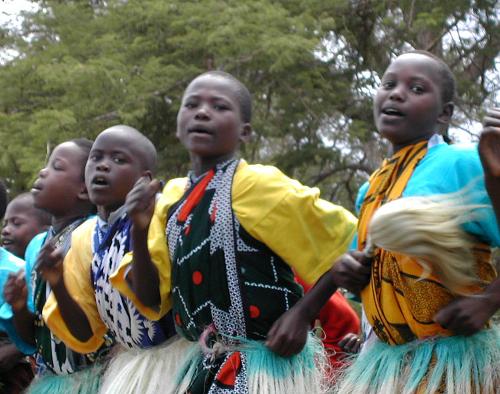 Population KenyaPhoto: Angela Sevin CC 2.0 Generic no changes made
Population KenyaPhoto: Angela Sevin CC 2.0 Generic no changes made
Kenya had 58,250,00 inhabitants in 2024. The population density is approximately 100 inhabitants per km2. The spatial distribution of the population is very uneven: approximately three-quarters of the population is concentrated on 10% of the total land area. The most densely populated areas are the South and Southwest and the coastline along the Indian Ocean. Large areas of Kenya are practically empty. Approx. three quarters of Kenya has a population density of less than 10 inhabitants per km2. Only 30% of the population live in urban areas. Nairobi has about 4 million inhabitants.
Annual population growth averaged 3.8% between 1970 and 1990, one of the highest growth rates in the world. Between 1990 and 1994 it had decreased slightly: 3.4% per year. In 2024, population growth was still 2.09%. The average life expectancy at birth is approximately 72.2 years for women and approximately 68.6 years for men. The population structure with a large percentage of children is typical of a developing country.
The number of inhabitants in 2024 between 0-14 years is 35.8%, between 15 and 64 years 60.9% and the number of people over 65 is 3,4%. Birth and death rates (2024) are 25.6 and 4.9 respectively. Africans make up 99% of the total population.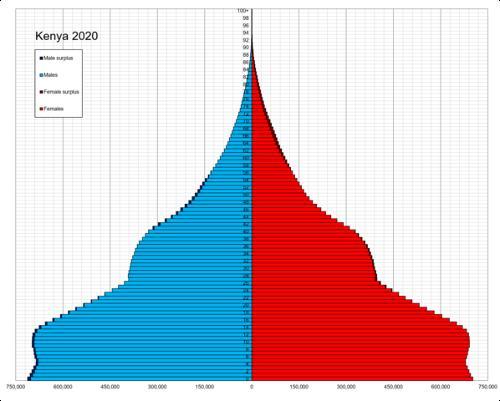 Age pyramid KenyaPhoto: Sdgedfegw CC 4.0 International no changes made
Age pyramid KenyaPhoto: Sdgedfegw CC 4.0 International no changes made
The approximately 58 million people who live in Kenya belong to about 40 different ethnic groups. Africans from all over the African continent live in Kenya together with small but often influential descendants of immigrants from Europe and Asia.
Some of the most important peoples are outlined below:
Kikuyu (approx. 17% of the population)
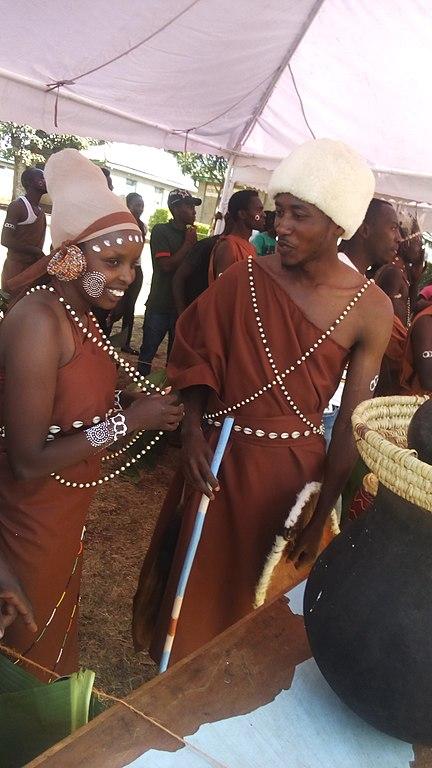 Kenya Kikuyu TribePhoto: Wanjaudan CC 4.0 International no changes made
Kenya Kikuyu TribePhoto: Wanjaudan CC 4.0 International no changes made
The Kikuyu are Kenya's largest ethnic group. They mainly live on the fertile land of Central Kenya as farmers. They are not only good farmers, but also gifted traders and entrepreneurs. Many Kikuyu live in Nairobi and hold important business and political positions there. Jomo Kenyatta, Kenya's first president, was also a Kikuyu.
Subgroups are Embu, Ndia and Mbeere.
Luo (approx. 10,7%)
The Luo are the second largest tribe in Kenya. They mainly live in the vicinity of Lake Victoria and in North and South Nyanza, where they make a living from agriculture and fishing. They too hold important positions in politics. Well-known leaders of the Luo were Tom Mboya and Oginga Odinga.
Maasai (approx. 2.5%)
The Maasai live in the south of the country and are Kenya's most famous tribe. They are still a shepherd people, proud of their ancient traditions. For example, the number of head of cattle they own is most important to them, not the amount of milk or meat the animals produce. The Maasai are also not interested in owning land.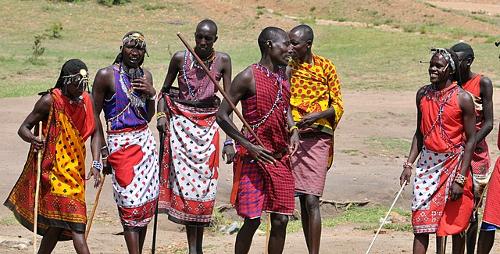 Maasai, KenyaPhoto: Jaipatova CC 4.0 International no changes made
Maasai, KenyaPhoto: Jaipatova CC 4.0 International no changes made
Mijikenda (approx. 5%)
The Mijikenda now live in the Kilifi and Kwale districts. They are divided into nine groups, including the Digo, Kauma, Kamba, Duruma and, most famously, the Giriama, who are best known for their dances and their music.
Turkana (approx. 2.1%)
The Turkana live in northwestern Kenya and as true nomads they still roam between Lake Turkana and the Rift Valley along the Uganda border. The Turkana consist of the Nimonia who live in the forest areas and the Nocuro who inhabit the savannas. The tribes are subdivided in about 20 clans, the "ategerin".
The Turkana also includes the El Molo people, which consisted of only 538 members at the 1979 census, making them the smallest people in Kenya.
Samburu
The Samburu live in the north of Kenya and are related to the Maasai in terms of culture and language. These shepherds still live as they used to and their lifestyle has hardly changed. The wealth of a family is measured by the number of cattle, goats and camels it owns.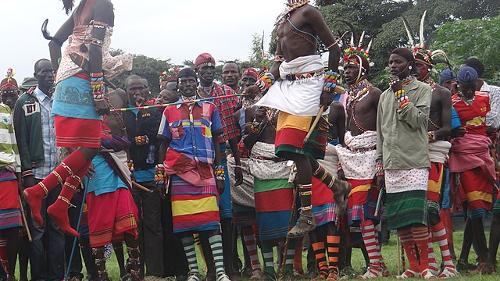 Samburu dancers, KenyaPhoto: Joseph KimaniT CC 4.0 International no changes made
Samburu dancers, KenyaPhoto: Joseph KimaniT CC 4.0 International no changes made
Rendille
The Rendille live on the southeastern shores of Lake Turkana and are related to the Somali. The Rendille live in semi-permanent settlements where they take care of large herds of camels, goats and sheep.
Boran
The Boran are herders who live in the Turkana area. They are related to the Cushites of Southern Ethiopia.
Akamba (approx. 10%)
The Akamba live east of Nairobi towards the Tsavo National Park. Hundreds of years ago they moved here in search of food. They were traders, including in ivory.
Subgroups are Kitui, Masaku and Mumoni.
Gusii or Kisii (approx. 6%)
The Gusii inhabit an area in the western highlands east of Lake Victoria. This Bantu speaking tribe lives among Nilotic speaking tribes. They are mainly livestock farmers.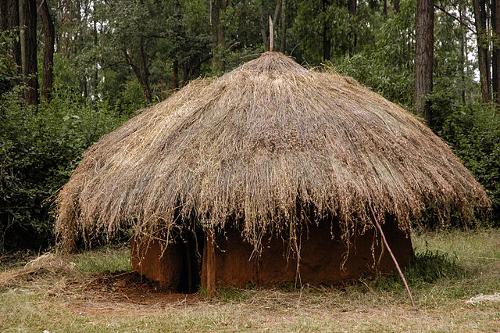 Hut in Kisii village at Bomas of Kenya near NairobiPhoto: Alexander Leisser CC 4.0 International no changes made
Hut in Kisii village at Bomas of Kenya near NairobiPhoto: Alexander Leisser CC 4.0 International no changes made
Kalenjin (approx. 13%)
The Kalenjin populate the west corner of the Rift Valley, including around Mount Elgon. They are used to be a shepherd people, now they are mainly farmers. The Kalenjin also include the Tugen, the people to which President Moi belonged.
Arab descendants
The Arabs, mainly from the Sultanate of Oman, settled on the coast of Kenya from around the 8th century and soon mixed with the indigenous Bantu people. This resulted in the Swahili culture that still makes up a large part of the coastal population. Most Kenyan Muslims belong to the Sunni religion.
Subgroups are Bajun, Siyu, Pate, Mvita, Fundi, Shela, Ozi, Vumba and Amu.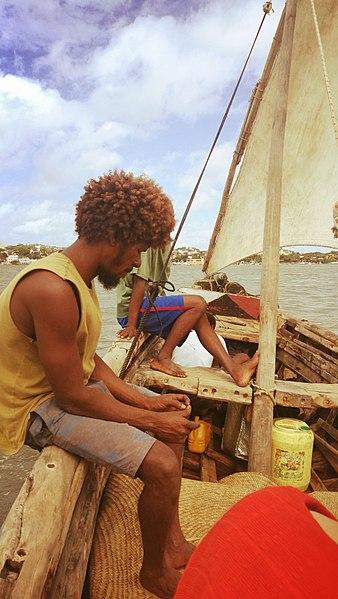 Bajun owner of a dhow, KenyaPhoto: Dulaneyj65`CC 4.0 International no changes made
Bajun owner of a dhow, KenyaPhoto: Dulaneyj65`CC 4.0 International no changes made
Asians and Europeans
About 1.5% of the Kenyan population is descended from Asian and European immigrants. They mainly work in industry and trade and usually live in the big cities. Most European ancestors entered the country in the 19th century. The Asian ancestors (approx. 32,000) came mainly from India (Gujarat and Punjab) and were used at the end of the 19th century (1896-1901) in the construction of the Mombasa-Kisumu railway line. For centuries there had been intensive contacts with Indian merchants who, however, rarely settled in Kenya. Wholesale and retail trade is largely in the hands of this population group. In addition to the Indian, there are also small Chinese and Japanese populations.
Sources
Dietz, T. / Kenya : mensen, politiek, economie, cultuur
Koninklijk Instituut voor de Tropen / Novib
Finlay, H. / Kenya
Lonely Planet
Kenia
Het Spectrum,
Winslow, Z. / Kenya
Chelsea House Publishers
CIA - World Factbook
BBC - Country Profiles
Copyright: Team The World of Info